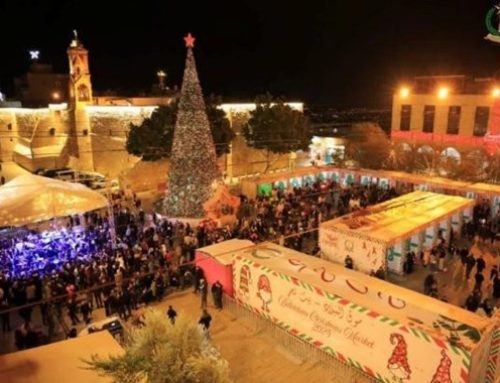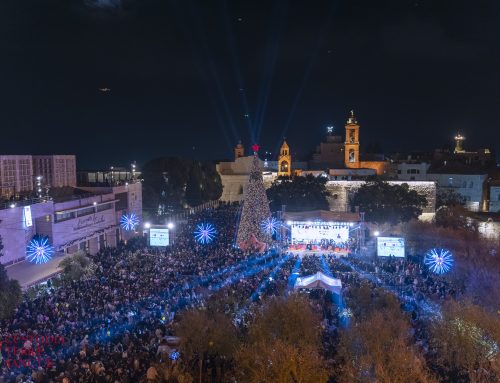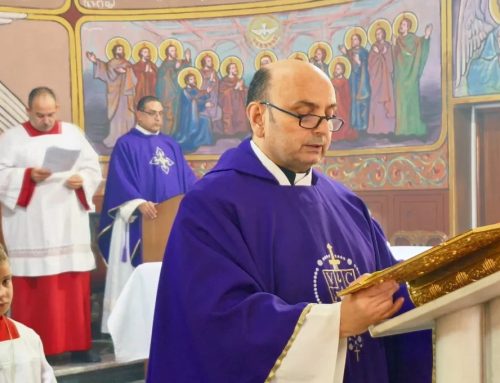The inauguration is set for 22 March in a “simple” joint ceremony based on unity between Greek Orthodox, Armenians and Latins, this according to Fr Sinisa Srebenovic. The work “brought together even more” the three great communities. Work on the basilica floor is the next step.
Jerusalem – The reopening of the Holy Sepulchre after the restoration work is an invitation to pilgrims from around the world, but especially in Europe and the West, to “come and visit the Holy Land.” They are, together with the local community, the “living stones” that make up “a unique land,” said Franciscan friar Br Sinisa Srebenovic.
The Croatian-born member of the Council of the Custody of the Holy Land, where he has lived for 11 years, spoke to AsiaNews about the forthcoming re-opening of the Holy Sepulchre on 22 March. “It will be a simple function,” he said, “a shared event in the spirit of unity, in which the Ecumenical Patriarch Bartholomew I of Constantinople will also participate.”
Restoration work on Jesus’s tomb began just under a year ago, in May 2016. Ten months later, scaffolding was removed from the aedicule making it visible. Some work is still ongoing in the non-visible part of the tomb, which will be completed in time for the inauguration.
The goal is to consolidate the whole structure, and preserve it from damage from quakes, like that of 1927. Both public and private groups are funding the work.
Antonia Mariopoulou, scientific coordinator of the restoration work, spoke to the Christian Media Center (CMC), about the “historic moments” that have characterised the work like “the opening of Jesus’s tomb” last October, “The first in 200 years and the third in history.”
The Holy Sepulchre, she said, is “a living, religious monument in which people pray incessantly [. . .] visited each year by millions of pilgrims. Preserving it is a challenge. With heart and mind, we could see a tomb full of expression.”
The Holy Sepulchre was built by the Roman Emperor Constantine in 325 AD after his mother Helena found the site. Over the centuries it has been partially destroyed and rebuilt and is one of the most visited and venerated sites in the Holy Land.
The last consolidation work of the Anastasis dates back to 1947 by the British; however, it could not be completed because the Orthodox, Armenians and Franciscans failed to agree upon it.
The structure covers the site where the remains of Jesus were placed after his death on the cross. For almost a year, a team of Greek researchers worked tirelessly in the holy place, without preventing the faithful from accessing it.
According to Br Sinisa Srebenovic, the restoration has brought closer together the three great communities in the Holy Land – the Greek Orthodox, Latin and Armenian – in the name of a “path started with the work in Bethlehem and continued here at the Holy Sepulchre”.
This “agreement is the fruit of the work of previous years, in the name of unity promoted by the Greek Orthodox Patriarchate, the Armenian Patriarchate, and the former Custos Fr Pierbattista Pizzaballa, who today is the apostolic administrator.”
There is already talk of a future joint project for “the basilica floor”. It is still in an early stage, Br Srebenovic noted, but “in the near future we will do it.”
“This work has a deep spiritual value,” he explained. It “strengthens unity and cooperation in spite of difficulties. Today the Holy Sepulchre is open in all its splendour and the fact that it will be ready just for the celebration of Easter, which this year is the same for the three Christian communities, is also a sign of the spirit.”
The inauguration will be a “shared moment” with a “shared purpose” in the name of “simplicity.” The event is scheduled for 10 am on 22 March in the presence of representatives of the Franciscan, Greek orthodox and Armenian communities.
There will be “three chants for each community”, Br Srebenovic noted, followed by the address of the Custos of the Holy Land and the Armenian and Greek Orthodox patriarchs. “The Lord’s Prayer in each language” will conclude the service.
For the Franciscan friar, the “Restoration is also an important message to pilgrims from around the world. Come here, do not be afraid! There are no real dangers and the presence of the faithful from around the world is essential to keep alive the Christian communities of the Holy Land, which is not composed of museums and exhibits, but of living stones.”
Source: Asia News






